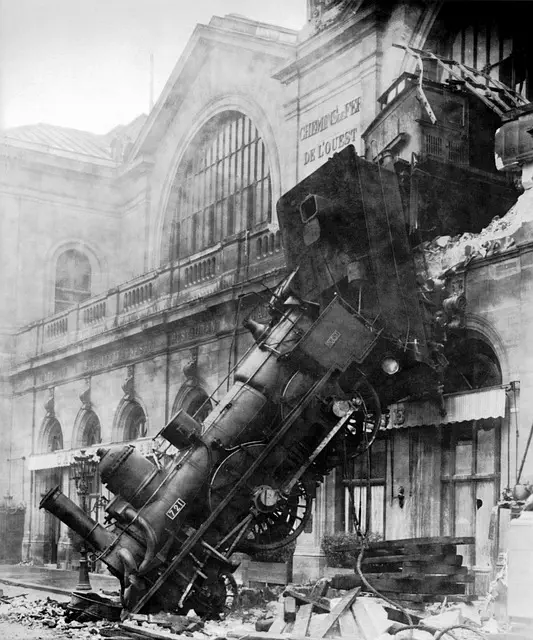Alcohol-related motorcycle accidents in Brooklyn pose a severe threat due to the vulnerability of riders, often resulting in life-altering injuries like closed head injuries (CHI), a leading cause of death in New York. These crashes highlight the dangers of combining alcohol and riding, especially on Brooklyn's complex streets. Addressing this through awareness campaigns, stricter laws, and rider education is crucial to reduce these accidents and enhance road safety. CHI, despite invisible wounds, causes serious neurological damage, underscoring the need for early detection, proper treatment, and rehabilitation. New York aims to combat this issue with comprehensive interventions, focusing on high-risk areas and implementing strategies to significantly decrease CHI and other severe injuries.
“In Brooklyn, alcohol-related motorcycle accidents pose a significant concern, with closed head injuries (CHI) in New York being a leading cause of fatalities. This article delves into the factors contributing to these crashes, analyzing statistical trends and risk elements. We explore the legal implications and safety measures aimed at curbing this issue. Additionally, support resources for victims and families are highlighted, emphasizing community efforts to mitigate the impact of CHI in New York.”
- Understanding Alcohol-Related Motorcycle Crashes in Brooklyn
- The Impact of Closed Head Injuries in New York
- Statistical Analysis: Prevalence and Trends
- Risk Factors and Common Causes
- Legal Implications and Safety Measures
- Support Resources for Victims and Families
Understanding Alcohol-Related Motorcycle Crashes in Brooklyn

Alcohol-related motorcycle accidents in Brooklyn are a significant concern, often resulting in severe injuries and even fatalities. These crashes highlight the dangers of combining alcohol consumption with motorcycle riding, which presents unique challenges due to the nature of motorcycles and their operators’ increased vulnerability. In New York, where closed head injuries are a prevalent outcome, understanding these accidents is crucial for safety initiatives.
Motorcyclists involved in drunk driving incidents face higher risks of suffering severe brain traumas, including closed head injuries. The impact of such accidents can be life-altering, leading to long-term cognitive and physical disabilities. Brooklyn’s bustling streets and highways serve as a complex labyrinth for motorcyclists, making it even more imperative to address alcohol-related risks. By raising awareness and implementing stricter laws, the city can work towards reducing these devastating collisions and ensuring the safety of all road users.
The Impact of Closed Head Injuries in New York

Motorcycle accidents involving alcohol are a significant concern in New York, particularly in Brooklyn, where they contribute to severe injuries and tragedies. Among the most devastating outcomes is the potential for closed head injuries (CHI), which can have long-lasting effects on victims’ lives. CHI occurs when there is a blow to the head without an obvious external wound or skull fracture, yet it can lead to serious neurological damage. These types of injuries are common in motorcycle crashes due to the force and impact experienced during a collision.
In New York State, efforts are underway to raise awareness about the dangers of alcohol and its impact on motor vehicle accidents, including motorcycles. Educating riders and the general public about CHI and other traumatic brain injuries is crucial in preventing these incidents and ensuring better outcomes for accident survivors. Early detection, proper medical treatment, and ongoing rehabilitation are key components of managing CHI, which can range from mild to severe, depending on the intensity of the initial impact.
Statistical Analysis: Prevalence and Trends

Alcohol-related motorcycle accidents in Brooklyn have been a subject of concern for public safety officials. Statistical analyses reveal alarming trends, indicating that a significant number of these incidents result in severe injuries, with closed head injuries (CHI) being among the most common and devastating outcomes. New York’s data shows a persistent rise in such accidents over the past decade, underscoring the need for targeted interventions to mitigate risks.
These trends highlight the urgent requirement for awareness campaigns, stricter enforcement of drinking and driving laws, and improved rider education programs. By examining these statistics, policymakers can identify high-risk areas and develop strategies to reduce alcohol-impaired riding, ultimately aiming to decrease the incidence of CHI and other life-altering injuries on Brooklyn’s roads.
Risk Factors and Common Causes

Motorcycle accidents in Brooklyn, particularly those linked to alcohol consumption, present a significant concern for road safety. Several risk factors and common causes contribute to these incidents. One of the primary risks is impaired judgment due to alcohol, leading to reckless driving behaviors such as speeding, abrupt lane changes, and failure to yield. These actions significantly increase the likelihood of collisions, especially in urban areas like Brooklyn with heavy traffic and narrow streets.
Closed head injuries are a prevalent outcome of motorcycle accidents, particularly when riders are not wearing protective gear. New York state laws mandate helmet use for motorcyclists, but other safety measures like wearing reflective clothing, ensuring proper motorcycle maintenance, and adhering to traffic rules can further reduce the risk of severe injuries, including closed head injuries. Understanding these risk factors is crucial in promoting rider safety and minimizing alcohol-related motorcycle accidents in Brooklyn.
Legal Implications and Safety Measures

In New York, particularly in Brooklyn, alcohol-related motorcycle accidents carry significant legal implications. When a rider is found to be under the influence of alcohol, they face severe penalties including fines, license suspension, and even imprisonment. Moreover, victims of such accidents may suffer from severe injuries, with closed head injuries being one of the most common and concerning outcomes. These injuries can lead to long-term cognitive and physical impairments, underscoring the importance of adhering to safety measures.
To mitigate these risks, it’s crucial for both riders and fellow road users to prioritize safety. This includes wearing appropriate protective gear like helmets designed to reduce the risk of closed head injuries, following traffic rules diligently, and avoiding any form of impairment while operating a motorcycle. Additionally, communities in Brooklyn can foster safer driving environments through advocacy for stricter DUI laws and improved road infrastructure that prioritizes motorcyclists’ safety.
Support Resources for Victims and Families

For victims and families affected by alcohol-related motorcycle accidents in Brooklyn, there are numerous support resources available. In cases involving severe injuries, such as closed head injuries—a common consequence of motorcycle crashes in New York—appropriate medical care is paramount. Victims may require lengthy rehabilitation to regain mobility and cognitive function.
Local non-profit organizations and support groups cater to the specific needs of those impacted by these accidents. They offer emotional counseling, legal aid, and financial assistance for medical bills and rehabilitation costs. Additionally, they facilitate connections between victims and experienced attorneys specializing in alcohol-related accidents, ensuring that all legal options are explored. These resources can provide much-needed guidance and support during an otherwise challenging and confusing time.
Alcohol-related motorcycle accidents in Brooklyn, often involving closed head injuries, underscore the need for heightened awareness and safety measures. As highlighted in this article, understanding the prevalence, causes, and legal implications of these crashes is crucial. In New York, where closed head injuries are a significant concern, education, stricter enforcement, and support resources can significantly reduce such incidents. By recognizing risk factors and implementing proactive safety measures, Brooklyn residents can foster a safer riding environment for all motorcycle enthusiasts.
